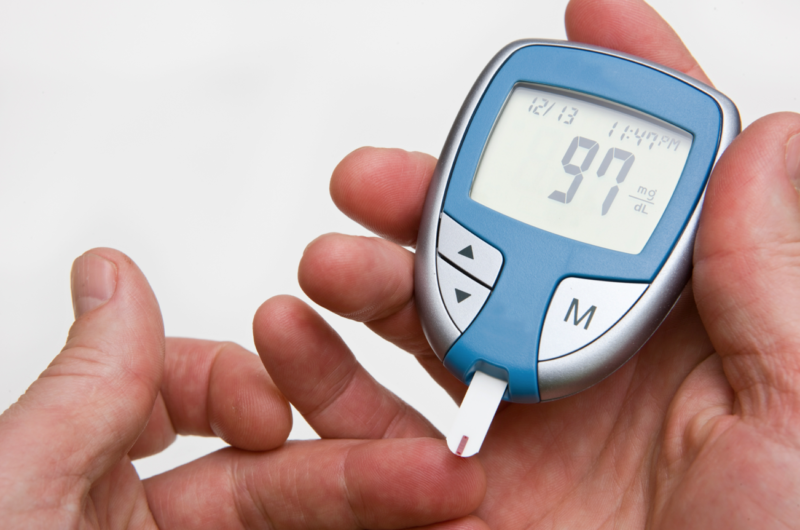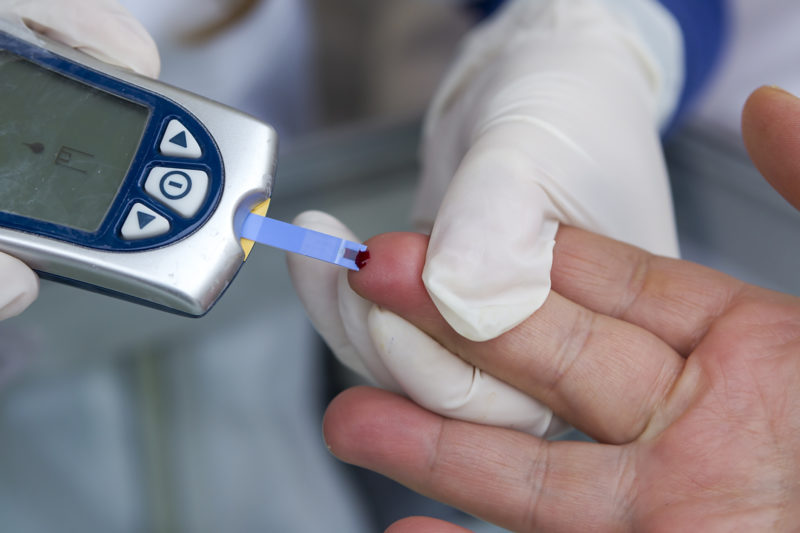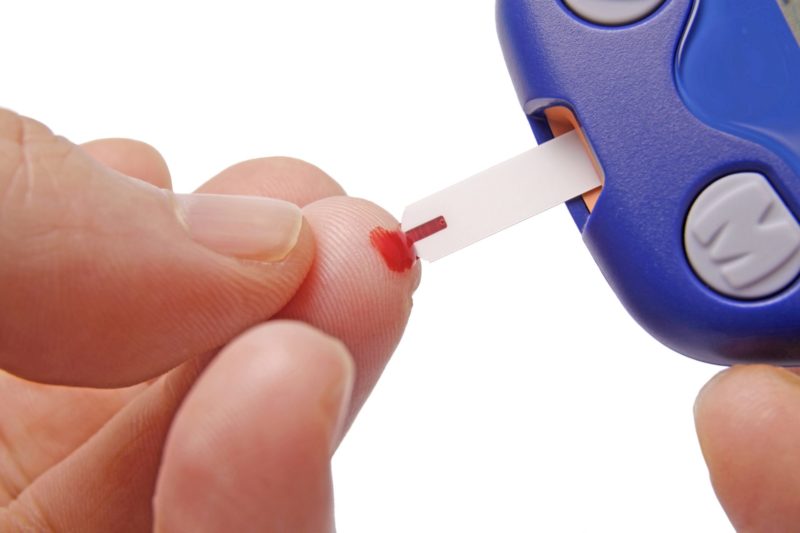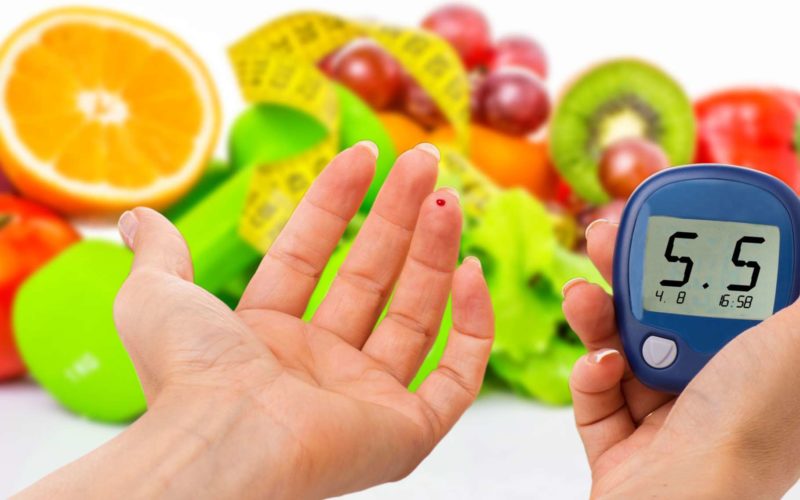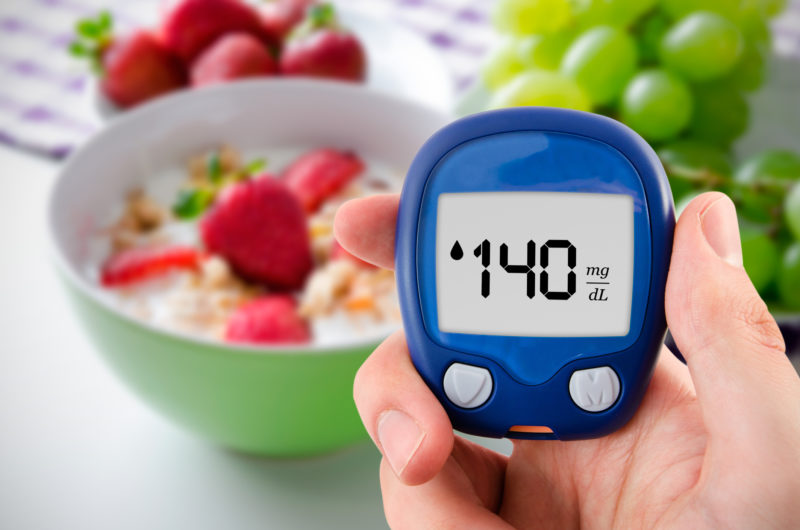What is the normal blood sugar level, how ideally the digestive system functions, is there a danger in food products - these questions more and more often arise in people's thoughts. The state of our body is affected by many unfavorable factors, including the circulatory system changes from improper food, stress and an unfavorable environment. So, you should pay attention to the amount of glucose in the blood. This indicator can tell a lot about human health.
Material Content:
Table: blood sugar rates by age
People far from medicine can not always understand the data of clinical studies and special medical terminology. The best way to understand the standards of sugar in the blood of a person will help graphs, charts and tables. The system of tables will help to quickly analyze the data of a clinical trial, so that the patient compares the received data with the norm.
Important! The glucose level is measured in the amount of millimol (mmol) per 1 liter of blood.
In men (almost healthy)
In its composition, male blood is somewhat different from female. As a rule, blood components are represented in greater quantities. This is due to the increased strength, performance and endurance of the male body.
Table "Blood sugar: normal for men by age"
| Age | Normal values (mmol / L) |
|---|---|
| Newborns | 2,8 – 4,3 |
| Under 14 years old | 3,4 – 5,5 |
| 14-21 year | 4,1 – 5,9 |
| 21-30 years old | 4,9 – 5,6 |
| 31-50 years old | 4,9 – 6,1 |
| 51-70 years old | 5,3 – 6,5 |
| Over 70 years old | 5,2 – 6,2 |
In women (almost healthy)
Important! After 40 years, women may experience hyperglycemia (increased sugar levels). Its reasons: bad habits, sedentary lifestyle, poor nutrition, stress.
Table "Blood sugar in women: the norm by age"
| Age | Normal values (mmol / L) |
|---|---|
| Newborns | 2,8 – 4,3 |
| Under 14 years old | 3,4 – 5,5 |
| 14-21 year | 4,0 – 5,8 |
| 21-30 years old | 4,7 – 5,3 |
| 31-50 years old | 4,9 – 5,8 |
| 51-70 years old | 5,3 – 6,5 |
| Over 70 years old | 5,3 – 6,6 |
During pregnancy (normal course)
Normal blood counts during pregnancy are significantly different from a woman’s age. Pregnancy is a special process during which the entire female body is rebuilt in a new way. It is not surprising that the indicators of laboratory and instrumental studies during this period are changing.
Hormonal restructuring of the female body leads to the fact that the level of sugar in pregnant women rises, going beyond the upper limit of normal. Do not allow its critical increase, since hyperglycemia can adversely affect the health of the mother and child.
Table "Blood sugar in pregnant women"
| Food addiction | Normal values (mmol / L) |
|---|---|
| Before eating | Not higher than 4.9 |
| 1 hour after eating | Not higher than 6.9 |
| 2 hours after eating | No higher than 6.3 |
Important! During pregnancy, glucose can not only increase, but also decrease. Low sugar is hypoglycemia. This condition is dangerous for the child with a deficiency of nutrients and energy reserves necessary for harmonious growth and development.
In children
The level of glucose in the blood of children directly depends on their physical activity, balanced diet and coordinated work of the endocrine system. A blood sugar test is prescribed in early childhood to prevent the development of serious diseases. The sugar rate in children is different from the norm in adults.
| Age | Normal values (mmol / L) |
|---|---|
| Newborns | 2,8 – 4,3 |
| 1-5 years | 3,3 - 5 |
| 6-11 years old | 3,4 – 5,5 |
| Over 11 years old | 3,5 – 5,5 |
High glucose - what does it mean
Increasing blood sugar or hyperglycemia is a rather dangerous process. Persistent hyperglycemia can indicate the development of a serious pathology - diabetes. The causes of increased enzyme are most often addictions (smoking, drug use), lack of physical activity, a large amount of junk food in the diet.
Causes of Enzyme Increase
Exceeding the upper limit of the norm of the enzyme can cause both physiological and pathological factors.
Physiological factors include the following:
- lack of exercise (lack of activity during the day);
- imbalance in the daily diet. The predominance of carbonated drinks, coffee, fatty and fried foods, flour and confectionery products increases the release of glucose into the blood after eating;
- taking certain medications (glucocorticoids, diuretics, β-blockers);
- constant stressful situations (lead to increased production of glucagon, which provokes the release of new portions of glucose into the blood);
- systematic physical and intellectual overload;
- the use of alcohol and alcohol-containing substances;
- women have an increase in sugar in premenstrual syndrome.
Important! According to some reports, severe pain also provokes the development of hyperglycemia. So, severe burns cause an increase in the sweet enzyme in the blood.
In medicine, there are several most important pathological causes of hyperglycemia:
- organ infections that provoke a slowdown in the metabolic process;
- diseases of the digestive tract, as a result of which the breakdown of carbohydrates is disturbed;
- vascular pathology, as a result of which glucose absorption in the body cells is disturbed;
- diseases of the liver and its lesions of various origins, leading to impaired glycogen synthesis;
- pancreatitis and other pancreatic pathologies;
- brain diseases (including traumatic injuries of the hypothalamus);
- pathology of the adrenal glands;
- hormonal dysfunctions.
Important! Attacks of angina pectoris and epileptic attacks can also cause hyperglycemia, which does not last long.
What to do when sugar is elevated?
If hyperglycemia is suspected, a laboratory blood test should be performed. Fasting sugar is determined. A referral for analysis can be obtained at the clinic at your place of registration or in a private laboratory. If an elevated glucose level is detected, consult a physician.
If physiological factors become the cause of hyperglycemia, it is important to reconsider your lifestyle:
- balance your daily diet. The amount of proteins, fats, carbohydrates and minerals must be supplied in sufficient quantities;
- drink enough water daily (2-2.5 liters);
- give up addictions. If it is impossible to stop smoking, minimize the harmful effects of nicotine on the body;
- reduce the burden on the body (both physically and emotionally);
- in stressful situations, try to worry less, pay more attention to positive aspects;
- if the increase in sugar is caused by medications, a specialist will choose an interchangeable effective medicine.
When pathology becomes the cause of hyperglycemia, the main task of the patient and the doctor is to eliminate the disease. Only recovery will lead to a decrease in elevated levels of the enzyme. During the treatment period, patients are prescribed diet therapy, sugar-burning drugs, and insulin therapy.
What does low blood sugar mean?
Low glucose or hypoglycemia is a condition no less dangerous than hyperglycemia. Hypoglycemia in the advanced stage can cause the development of hypoglycemic coma. This condition is accompanied by loss of consciousness, cramps, muscle paralysis. In especially severe conditions, a fatal outcome is possible.
Reasons for lowering the level
The causes of hypoglycemia are also divided into physiological and pathological.
The following are physiological:
- skipping meals or prolonged fasting;
- the use of a large number of simple carbohydrates (sweet drinks, sugar, sweets, etc.);
- taking certain medications (in particular, adrenergic blockers);
- excessive physical activity.
Important! The introduction of high doses of insulin can cause hypoglycemia.
Pathological reasons:
- adrenal disease;
- kidney pathology;
- pathology of the pancreas;
- the systematic use of excessive doses of alcohol;
- violation of metabolic processes in the body.
How to normalize indicators?
With mild hypoglycemia, a small amount of carbohydrate food is enough to normalize the condition. It can be marmalade, honey, candy or sweet tea. Simple carbohydrates provide normal glucose levels in a short time.
Hypoglycemia of moderate severity is accompanied by weakness, fatigue, drowsiness, attacks of aggression, minor convulsions. If simple carbohydrates do not help, medical attention is needed. To stabilize the patient's condition, it is necessary to inject a glucose solution or glucagon intramuscularly or intravenously.
Severe hypoglycemia is extremely dangerous. There is loss of consciousness, increased seizures, hypothermia. The patient needs urgent hospitalization in a hospital, where he will be given an infusion of glucose solution. Symptomatic treatment of the underlying cause of hypoglycemia (pancreatitis, renal failure) is carried out.
Diabetes Prevention
Since diabetes is often inherited, it is impossible to completely protect yourself from this disease. But minimizing the risk of pathology is quite possible. To do this, you should follow simple recommendations regarding nutrition, physical activity and lifestyle.
It is necessary to carefully approach the issue of nutrition. The detail of meals, a balanced diet and water balance are the three pillars of food prevention. Eating in small portions 5-6 times a day every 2-3 hours will keep your insulin levels normal. A proper diet rich in proteins, vitamins, healthy fats and complex carbohydrates will provide maximum benefits. And maintaining the water balance will allow all metabolic processes to work like clockwork.
Physical activity should be a daily component. Easy exercise in the morning, active walking and power loads 2-3 times a week will provide good muscle tone, activity of metabolic processes, vitality and cheerfulness.
Compliance with a healthy lifestyle, useful hobbies and hobbies will fill life with freedom, positive moments and the absence of stress. Refusal of bad habits and regular hardening will strengthen the protective abilities of the body, make it immune to various infections. A regular examination by a specialist will reveal diabetes in the early stages. Early diagnosis several times increases the success of therapy and increases life expectancy without diabetes.


